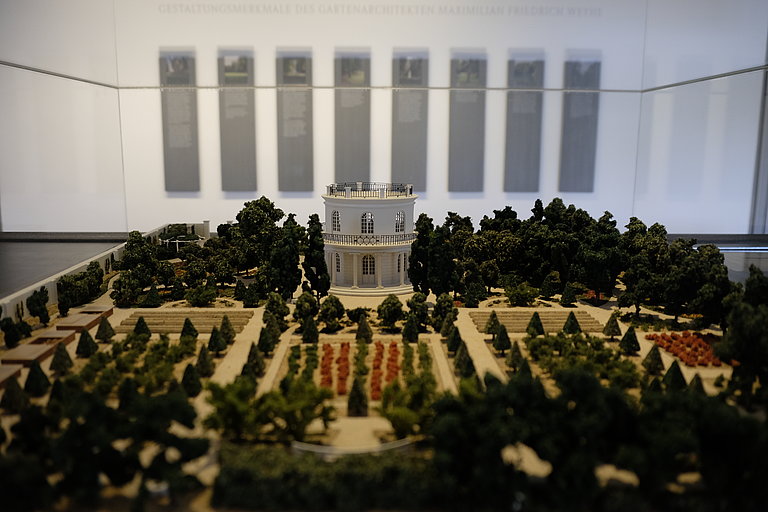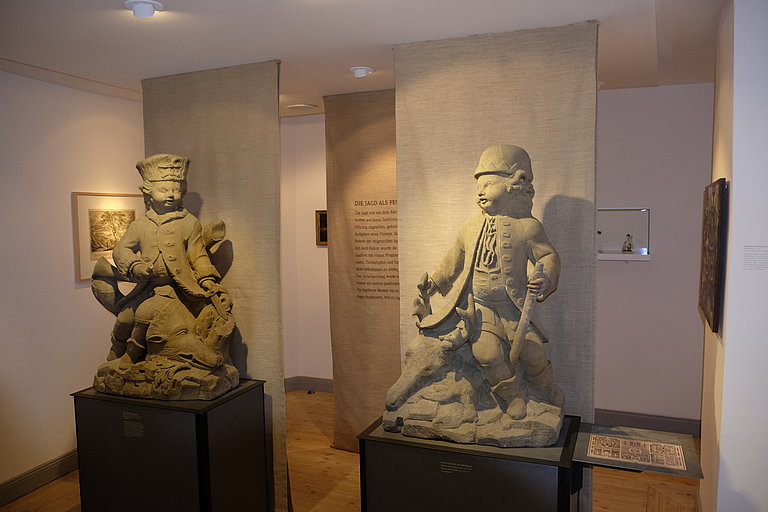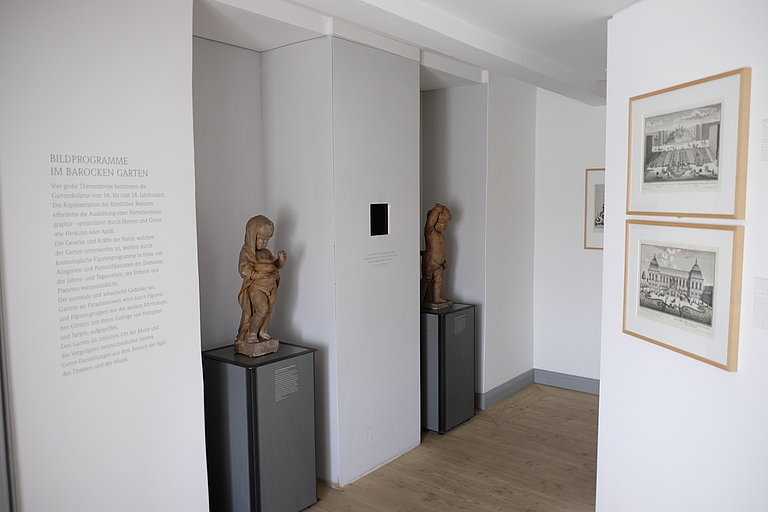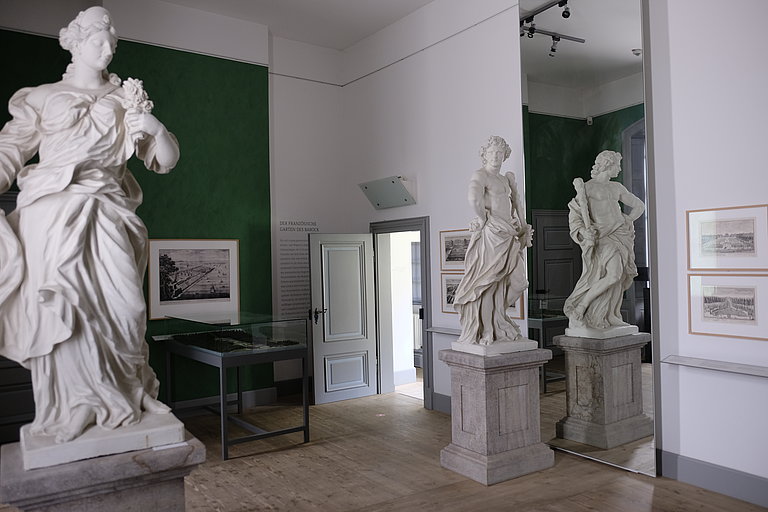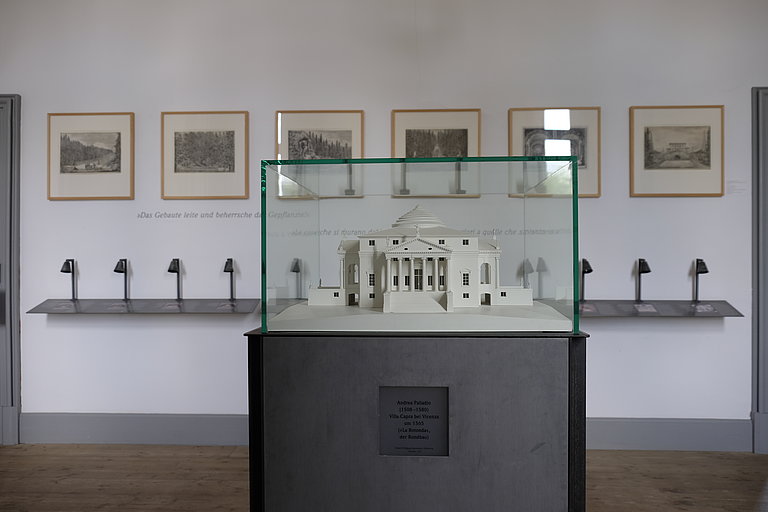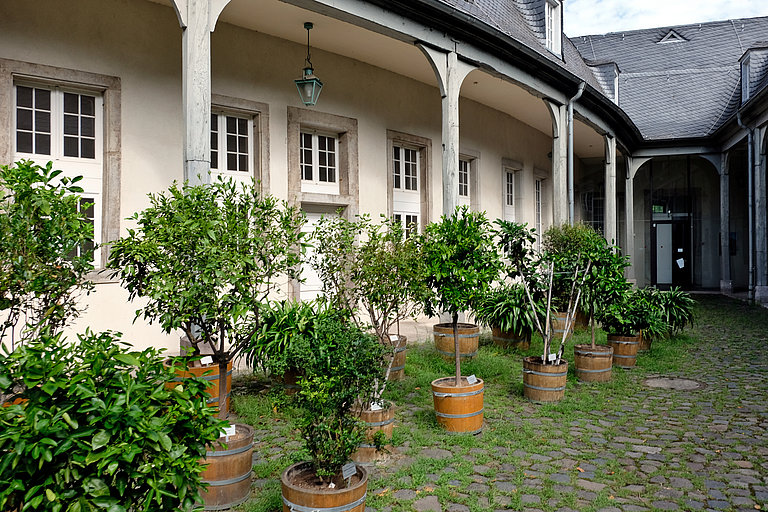Museum of Garden Art
Opening hours
-
Monday
11 am - 5 pm
-
Tuesday
11 am - 5 pm
-
Wednesday
closed
-
Thursday
closed
-
Friday
2 pm - 5 pm
-
Saturday
11 am - 6 pm
-
Sunday
11 am - 6 pm

EUROPEAN GARDEN ART
and its diversity
Concerning its topics, the Museum of Garden Art is unique, as it is dedicated to the diversity of European garden art. Apart from an overview of the estimated 2,500 years of garden history, various aspects of garden art are focused upon: Flower fashions, sculptures in the park, the art of wood carving, the garden as a pharmacy or the introduction of rare flowers. Benrath Palace and its far-stretching Park are represented, as well as Düsseldorf as a city of flowers along with an exemplary outlook on current tendencies of garden art.
Paintings, sculptures, porcelain, artwork, devices and valuable books are presented on an exhibition area of about 2,000 square metres and in 41 rooms with various types of media such as models, films and listening stations. Ostensibly, they sum up the artistic designs of old and new gardens. The museum offers an overall glimpse at the cultural history of gardens from ancient times to the modern world.
The former Cavaliers‘ (guest and service) Wing is located between garden areas, the Palace Pond and the largely reconstructed rooms hosting numerous historic architectural elements such as fireplaces, heating, doors and wall panels. Thanks to its location, the museum sets an edifying frame for a journey through the centuries-old history of garden art and of Benrath Palace.
The charming atmosphere of the inner courtyard with its unusual ground plan, its archways supported by wooden pillars and the collection of historic citrus trees referencing the three-hundred-years-old Orangery tradition at Benrath Palace between April and October invite the visitor to linger, especially during the summer months.
Preceding Special Exhibitions at the Museum of Garden Art
- THE HAMBACH FOREST AND THE PRICE OF OUR ENERGY SUPPLY
Duration: April 21, 2023 – December 3, 2023 - CITRUS MANIA. GOLDEN FRUIT IN PRINCELY GARDENS
Duration: April 7, 2022 – September 18, 2022
Our house rules
- Bags, umbrellas and other luggage please stay in the checkroom.
- Bringing drinks and food in the historical rooms is not allowed.
- Please do not touch anything.
- Please take photos for private purpose only and without flash.

